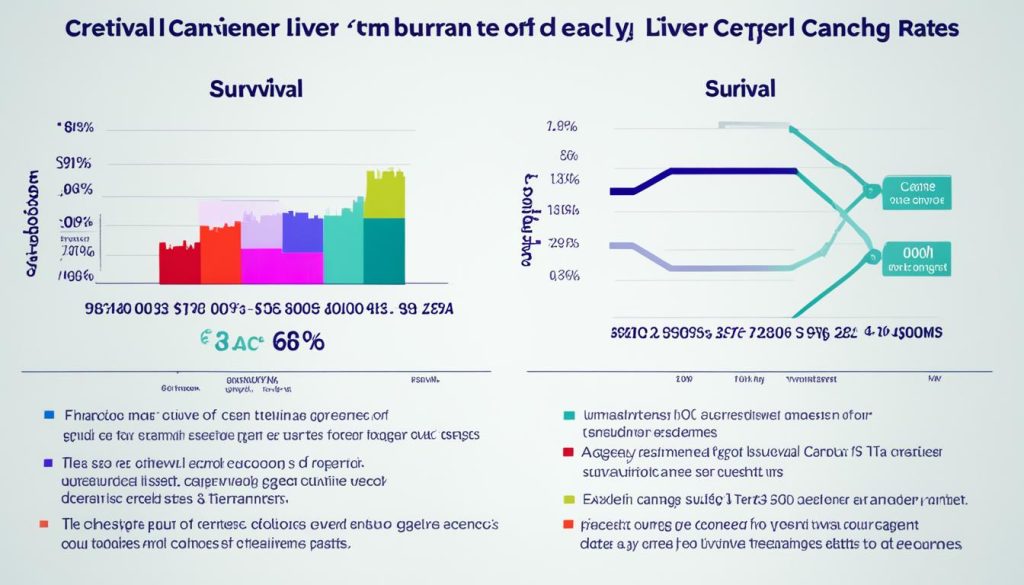Living with liver cancer can be a challenging journey, filled with uncertainties about survival rates, prognosis, and life expectancy. Many individuals facing a liver cancer diagnosis wonder, “What is the longest someone has lived with liver cancer?”
According to various sources, the longest recorded survival time for someone with liver cancer is an incredible 43 years and 2 months. While this is an exceptional case, there have been other inspiring stories of long-term survival.
It is important to note that survival rates for liver cancer can vary depending on the stage of the cancer and individual factors. The 5-year survival rate for localized liver cancer is approximately 31%, while it decreases to 11% for cancer that has spread nearby and 3% for metastasized cancer.
Despite these statistics, it is crucial to maintain hope and seek medical treatment and support. The field of liver cancer treatment has advanced significantly, offering various options such as surgery, radiation therapy, chemotherapy, immunotherapy, and targeted therapies.
Additionally, hearing and sharing liver cancer survivor stories can provide comfort and inspiration. Each person’s journey with liver cancer is unique, and these stories showcase the strength, resilience, and hope that can be found in the face of adversity.
Living with liver cancer can be challenging, but with the right medical care, treatment, and support, individuals can improve their prognosis and quality of life. It is essential to stay positive, stay informed, and surround yourself with a strong support system to navigate this journey.
In the following sections, we will explore factors affecting liver cancer survival, treatment options available, remarkable survivor stories, liver cancer statistics, and risk factors. Whether you are seeking information for yourself or a loved one, we hope this article provides valuable insights and guidance.
Factors Affecting Liver Cancer Survival
Several factors can impact liver cancer survival rates. The stage of the cancer at diagnosis plays a significant role, with higher survival rates associated with early-stage cancer. According to statistics, the 4-year survival rate for stage 1 liver cancer is more than 45%, while it decreases to around 35% for stage 2, 10% for stage 3, and almost 5% for stage 4. Other factors that can affect survival include the type of liver cancer, the overall health and fitness of the individual, and the treatments received. Early detection, curative resection, and regular follow-up are considered crucial for improving long-term survival for liver cancer patients.
Below is a table highlighting the survival rates based on the stage of liver cancer:
| Stage | Survival Rate |
|---|---|
| Stage 1 | More than 45% |
| Stage 2 | Around 35% |
| Stage 3 | 10% |
| Stage 4 | Almost 5% |
As shown in the table, the survival rates decrease as the stage of the liver cancer progresses. It emphasizes the importance of early detection and timely treatment for better outcomes. Additionally, individual factors, such as overall health and fitness, and the type of liver cancer, can also impact a patient’s prognosis.

It is crucial for individuals diagnosed with liver cancer to understand the factors that influence their prognosis and work closely with their medical team to develop a personalized treatment plan. Regular follow-up appointments and adherence to recommended treatments can improve the chances of long-term survival and enhance the overall quality of life for liver cancer patients.
Treatment Options for Liver Cancer
When it comes to liver cancer, the available treatment options depend on several factors, such as the stage of the cancer, the overall health of the patient, and individual preferences. These treatment options aim to improve prognosis, enhance survival rates, and improve the quality of life for patients.
One of the gold standard treatments for liver cancer is surgery, particularly resection. Resection involves removing the tumor and surrounding healthy tissue. This procedure can significantly improve the prognosis for patients with liver cancer.
In some cases, liver transplantation may be an option. Liver transplantation involves replacing the diseased liver with a healthy liver from a donor. This treatment option provides a chance for long-term survival and improved quality of life.
Another promising treatment option for advanced liver cancer is radiation therapy, specifically stereotactic body radiotherapy (SBRT) like CyberKnife radiation therapy. This precise and targeted radiation therapy has shown positive results in improving survival rates for patients with advanced liver cancer.
Chemotherapy, immunotherapy, and targeted therapies are also viable options for liver cancer treatment. These systemic treatments work by targeting cancer cells throughout the body, either by killing them or slowing their growth.
It is important to note that the choice of treatment for liver cancer is highly personalized, and it is essential for individuals with liver cancer to discuss their options with their healthcare providers. Together, patients and healthcare providers can create a treatment plan that aligns with the individual’s needs and maximizes the chances of successful treatment outcomes.

| Treatment Options | Description |
|---|---|
| Surgery (Resection) | Removal of the tumor and surrounding healthy tissue to improve prognosis. |
| Liver Transplantation | Replacement of the diseased liver with a healthy liver from a donor, offering long-term survival opportunities. |
| Radiation Therapy (SBRT) | Precise and targeted radiation therapy that can improve survival rates for advanced liver cancer patients. |
| Chemotherapy | Systemic treatment that targets cancer cells throughout the body by killing them or slowing their growth. |
| Immunotherapy | Harnessing the immune system to recognize and attack liver cancer cells. |
| Targeted Therapies | Drugs that directly target specific mutations or characteristics of liver cancer cells. |
What is the Longest Someone Has Lived With Liver Cancer?
While liver cancer can be a challenging diagnosis, there are remarkable survivor stories of individuals who have lived with the disease for many years. These stories highlight the importance of early detection, effective treatment, and resilient individuals who have defied the odds.
One exceptional liver cancer survivor is Elizabeth Davis, who was diagnosed with stage 3 liver cancer at the age of 40. Despite the grim prognosis, Elizabeth underwent surgery followed by targeted therapy and radiation. With determination and a positive mindset, she fought against all odds and celebrated her 10-year survival milestone just last year.
Another remarkable survivor is Thomas Johnson, who was diagnosed with liver cancer at an advanced stage. Given a short life expectancy, Thomas decided to explore alternative treatments and adopt a holistic approach to his cancer journey. Through dietary changes, stress reduction techniques, and complementary therapies, Thomas not only improved his quality of life but also exceeded all expectations by surpassing the five-year survival mark.
These survivors, along with many others, have shared their experiences to inspire and support others facing similar challenges. They emphasize the importance of hope, resilience, and a multidisciplinary approach to treatment.
Long-term survival with liver cancer is possible, and each survivor’s journey is unique. It is crucial for individuals diagnosed with liver cancer to remain proactive, seek appropriate medical care, and build a strong support network. By sharing their stories, these remarkable survivors instill hope in others and demonstrate that with determination and support, long-term survival with liver cancer is achievable.

Liver Cancer Statistics and Risk Factors
Liver cancer is a significant health concern globally and is one of the leading causes of cancer-related deaths. The incidence of liver cancer has been increasing in recent years. In the United States, the overall survival rate for liver cancer is 20%, with a 5-year survival rate of 34% for localized-stage cancer.

The risk factors for liver cancer include alcohol abuse, smoking, obesity, metabolic diseases, hepatitis B or C infection, and diabetes. It is crucial for individuals to be aware of these risk factors and take preventive measures to reduce their chances of developing liver cancer.
Liver Cancer Survival Rate by Age
| Age Group | 5-Year Survival Rate |
|---|---|
| 0-19 | 68% |
| 20-39 | 36% |
| 40-59 | 18% |
| 60-79 | 9% |
| 80+ | 4% |
As shown in the table, the 5-year survival rate for liver cancer decreases with age. Early detection and timely treatment are crucial for improving prognosis and increasing the chances of long-term survival.
Conclusion
Advancements in liver cancer treatment options and early detection have significantly improved survival rates for individuals diagnosed with this disease. While liver cancer can have a profound impact on individuals and their loved ones, it is crucial for patients to seek comprehensive medical care and explore the available treatment options.
The inspiring stories of individuals who have lived with liver cancer for extended periods show the strength and resilience of those fighting this disease. Each person’s journey with liver cancer is unique, and with timely and appropriate treatment, long-term survival and an improved quality of life are possible.
It is important for patients to consult with their healthcare providers to understand the various liver cancer treatment options available and find the best approach for their specific situation. Additionally, finding support networks and utilizing resources can provide invaluable emotional and practical assistance throughout the journey of living with liver cancer.
While the longest recorded survival time for liver cancer is an impressive testament to the progress made in managing the disease, it is essential to remember that each individual’s prognosis can vary depending on factors such as the stage of cancer and overall health. By staying proactive, well-informed, and optimistic, individuals diagnosed with liver cancer can navigate their journey with confidence and hope.




